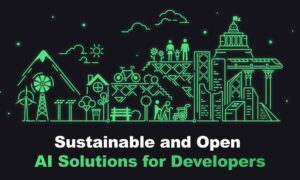One area that holds immense promise in mitigating environmental impact is the transformation of waste into valuable resources through the application of sustainable technology. In an era where environmental concerns are at the forefront of global discourse, the imperative to adopt sustainable practices has never been more critical. This paradigm shift not only addresses the burgeoning waste crisis but also opens avenues for resource conservation, energy generation, and overall environmental sustainability.
Understanding the Waste Dilemma
The world is grappling with a monumental waste problem. Landfills burgeon with non-biodegradable waste, oceans are plagued with plastic pollution, and the carbon footprint of waste disposal processes exacerbates climate change. However, within this challenge lies an opportunity for innovation and change. Sustainable technology offers a viable solution by redefining waste as a potential resource rather than a burden.
Waste-to-Energy: Turning Trash into Power
One of the most significant advantages of sustainable technology in waste management is the concept of waste-to-energy. Traditional waste disposal methods, such as landfilling or incineration, contribute to environmental degradation. Conversely, waste-to-energy technologies harness the calorific value of waste to generate electricity or heat. This not only reduces the volume of waste in landfills but also provides a sustainable source of energy, contributing to the diversification of the energy mix.
Circular Economy: A Paradigm of Resource Conservation
Sustainable technology facilitates the transition from a linear economy to a circular one, where resources are continually recycled and reused. Instead of following the ‘take, make, dispose’ model, a circular economy focuses on minimizing waste by designing products for durability, reparability, and recyclability. Technologies like advanced recycling processes and closed-loop systems play a pivotal role in achieving the goals of a circular economy, ensuring that waste is not merely discarded but transformed into valuable raw materials.
Bioconversion: Nature’s Way of Recycling
Nature has been recycling organic waste for millions of years through processes like decomposition and composting. Sustainable technology takes inspiration from these natural processes and enhances them for efficient waste management. Bioconversion technologies, such as anaerobic digestion and composting, break down organic waste into valuable by-products like biogas and nutrient-rich compost. These processes not only reduce the environmental impact of organic waste but also contribute to soil health and agricultural productivity.
E-Waste Management: Navigating the Digital Revolution
As technology advances, so does the challenge of managing electronic waste (e-waste). Sustainable technology plays a crucial role in addressing this issue by promoting responsible e-waste management practices. Recycling technologies for e-waste extract valuable metals and components, reducing the need for mining raw materials and minimizing the environmental impact of electronic devices. Additionally, sustainable design principles encourage the creation of electronic products with longevity and ease of recyclability in mind.
Economic Opportunities and Job Creation
Embracing sustainable technology in waste management not only benefits the environment but also creates economic opportunities. The development, implementation, and maintenance of sustainable technologies generate jobs across various sectors, from research and development to manufacturing and operations. Moreover, the shift towards sustainability often fosters innovation, leading to the emergence of new industries and market opportunities.
Public Awareness and Education
An essential aspect of the transition to sustainable waste management is public awareness and education. Sustainable technology empowers individuals and communities to actively participate in waste reduction initiatives. Educational programs can highlight the importance of waste segregation, the benefits of recycling, and the impact of individual choices on the environment. By fostering a sense of responsibility and understanding, sustainable technology becomes a catalyst for widespread behavioral change.
Overcoming Challenges and Nurturing Innovation
The adoption of sustainable technology in waste management is not without its challenges. However, these challenges should be viewed as opportunities for innovation and progress, driving the evolution of waste management practices toward a more sustainable future.
- Implementation Hurdles
The transition to sustainable waste management often faces obstacles during implementation. Existing infrastructures may not be designed to accommodate new technologies, and integrating these innovations into established systems can be a complex process. However, overcoming implementation hurdles requires a commitment to invest in necessary upgrades and adaptability. Governments, businesses, and communities must collaborate to create an environment conducive to the seamless integration of sustainable technologies.
- Technological Constraints
Advancements in sustainable technology are crucial for overcoming the technological constraints associated with waste management. Continuous research and development efforts are necessary to enhance the efficiency and affordability of sustainable solutions. Investing in cutting-edge technologies, such as artificial intelligence for smart waste management systems or advanced recycling processes, can lead to breakthroughs that address the limitations of current waste management practices.
- Economic Considerations
The upfront costs of implementing sustainable waste management technologies can be a deterrent for many stakeholders. However, a shift in perspective is needed to recognize the long-term economic benefits. Governments and businesses should explore financial incentives, subsidies, and innovative funding models to make sustainable technologies more accessible. Demonstrating the cost-effectiveness and return on investment over time can encourage widespread adoption.
- Policy and Regulatory Support
Effective policies and regulations play a crucial role in supporting the adoption of sustainable waste management technologies. Governments need to enact and enforce regulations that incentivize sustainable practices while penalizing environmentally harmful alternatives. Clear guidelines and standards can create a level playing field, encouraging businesses to invest in sustainable technologies and ensuring accountability across the waste management sector.
- Public Perception and Acceptance
Public perception and acceptance are integral to the success of any sustainable initiative. It is essential to communicate the benefits of sustainable waste management clearly. Public awareness campaigns, education initiatives, and community engagement programs can help dispel misconceptions and garner support for sustainable practices. Involving communities in decision-making processes fosters a sense of ownership and encourages active participation.
- Collaboration and Knowledge Sharing
Collaboration between governments, industries, academia, and communities is vital for overcoming challenges and fostering innovation. Establishing platforms for knowledge sharing, such as conferences and collaborative research projects, enables stakeholders to learn from each other’s experiences and best practices. Open dialogue facilitates the identification of common challenges and the development of collective solutions that benefit everyone involved.
- Incentivizing Innovation
Innovation thrives in an environment that rewards creativity and problem-solving. Governments and private entities can incentivize innovation in sustainable waste management by offering grants, awards, and recognition for groundbreaking solutions. Creating incubators and accelerators focused on waste reduction technologies can nurture startups and entrepreneurs, driving the development of novel approaches to waste management.
- Community Engagement and Empowerment
Engaging and empowering local communities is essential for the success of sustainable waste management initiatives. Community-led projects, education programs, and participatory decision-making processes can instill a sense of responsibility and environmental stewardship. When communities are active participants in waste management solutions, the chances of success and long-term sustainability significantly increase.
Conclusion
From waste to resource, sustainable technology offers a transformative journey towards a more sustainable future. By harnessing the inherent value in waste, we not only address environmental challenges but also create a more resilient and resource-efficient society. Embracing these technologies is not just a choice but a necessity for the well-being of our planet and future generations. As we navigate the complexities of waste management, sustainable technology stands as a beacon of hope, guiding us towards a more sustainable and harmonious coexistence with our environment.



































